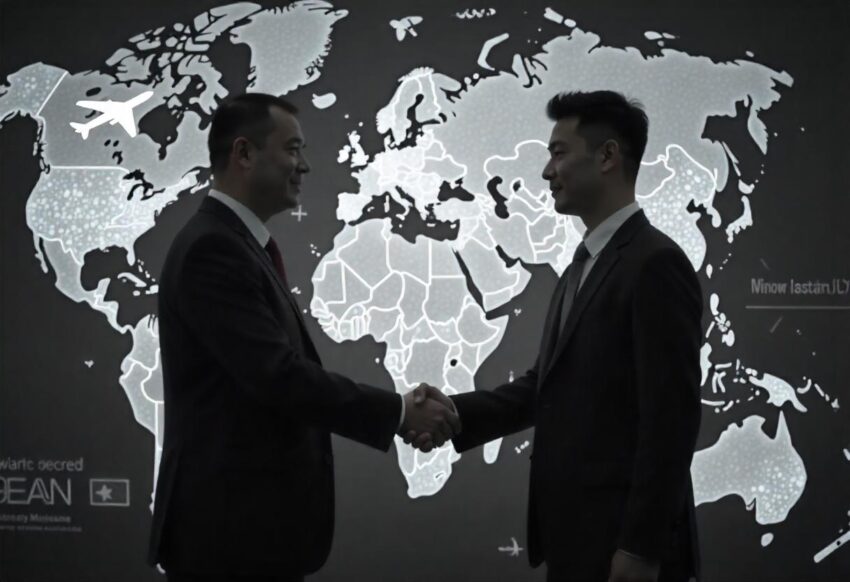Tech moves fast—stay faster.
Tech moves fast—stay faster.
China’s New ‘ASEAN Visa’ Aims to Deepen Regional Connectivity and Boost Economic Recovery

By Farhan Ali • June 23, 2025
In a move signaling China’s growing influence in Southeast Asia, Beijing has officially launched a new “ASEAN Visa” for citizens of ASEAN member states, including the recently admitted Timor-Leste. The visa is designed to facilitate cross-border travel, economic integration, and professional exchange across the region.
According to the National Immigration Administration of China, the ASEAN Visa will simplify application procedures and lower the barrier for intra-regional mobility—especially for businesspeople, students, digital workers, and investors.
What the ASEAN Visa Includes
- Fast-track processing for ASEAN passport holders
- Multiple-entry validity across one or more years
- Unified policy standards across embassies and consulates
- Initial rollout countries include all 10 ASEAN members plus Timor-Leste
China’s immigration authority says the policy aims to “create a seamless travel corridor” for professionals and businesses across Asia. The move comes after ASEAN-China ties reached new heights in 2024, when China reaffirmed its strategic partnership with the bloc and proposed further alignment on digital infrastructure, tourism, and logistics.
(Source: National Immigration Administration, June 2025)
Why It Matters
The launch of the ASEAN Visa is being interpreted by analysts as a geopolitical and economic signal. With the U.S. and EU facing slower recovery, China has ramped up efforts to position itself as the central node of regional growth and mobility.
“This is part of China’s strategy to internationalize its immigration regime while strengthening soft power among ASEAN neighbors,” said Prof. Zhang Rui, an expert on Asian geopolitics at Tsinghua University.

Boost to Travel, Trade, and Talent
In practical terms, the visa is expected to:
- Accelerate tourism recovery, especially from Thailand, Malaysia, and Vietnam
- Facilitate cross-border hiring, including fintech, logistics, and e-commerce sectors
- Increase capital flow, particularly from Singapore and Indonesia into Greater Bay Area tech hubs
A 2025 report by the ASEAN Business Advisory Council found that visa and travel friction had cost the region nearly $13 billion annually in lost business opportunities. China’s response may change that.
(Source: ASEAN-BAC Annual Policy Brief 2025)
Notable Inclusion: Timor-Leste
The visa also includes Timor-Leste, ASEAN’s newest member as of 2024. Analysts say this is a strong symbolic move showing that Beijing is keen to extend regional cohesion beyond the core economic players.
“This is more than a travel document—it’s a regional alignment mechanism,” said RCEP policy analyst Nurul Khalisah.
What Comes Next?
While it is currently available only for ASEAN nationals, observers say the visa may eventually expand to include broader “Asia-Pacific friendly nations” under China’s evolving diplomatic model.
In the meantime, it sends a powerful message: China is using immigration policy as a diplomatic tool—not only to strengthen post-pandemic recovery but to cement its position as Asia’s connective superpower.
Sources:
- China National Immigration Administration
- CGTN, “Beijing Introduces ASEAN Regional Visa Program,” June 2025
- Xinhua News Agency
- ASEAN Business Advisory Council Report, 2025
- Tsinghua University – Department of International Relations

Explore more
China’s Defense Industry Is Experiencing a “DeepSeek Moment” in Breakthrough and Independence
By Farhan Ali • June 23, 2025 China is no stranger to...
FIFA Selects Jakarta as Regional Headquarters for Southeast and East Asia—Here’s What That Means for Football in the Region
By Evolution Staff • June 23, 2025 Jakarta has taken a giant...
Scoot Named World’s Best Long-Haul Low-Cost Airline by Skytrax—Here’s Why It Matters
By Evolution Staff • June 23, 2025 Scoot, the low-cost subsidiary of...
Borobudur Reawakens: Inside Indonesia’s Vision to Make the Temple a Global Spiritual Sanctuary
By Evolution Staff • June 23, 2025 Towering above the lush jungles...














Leave a comment